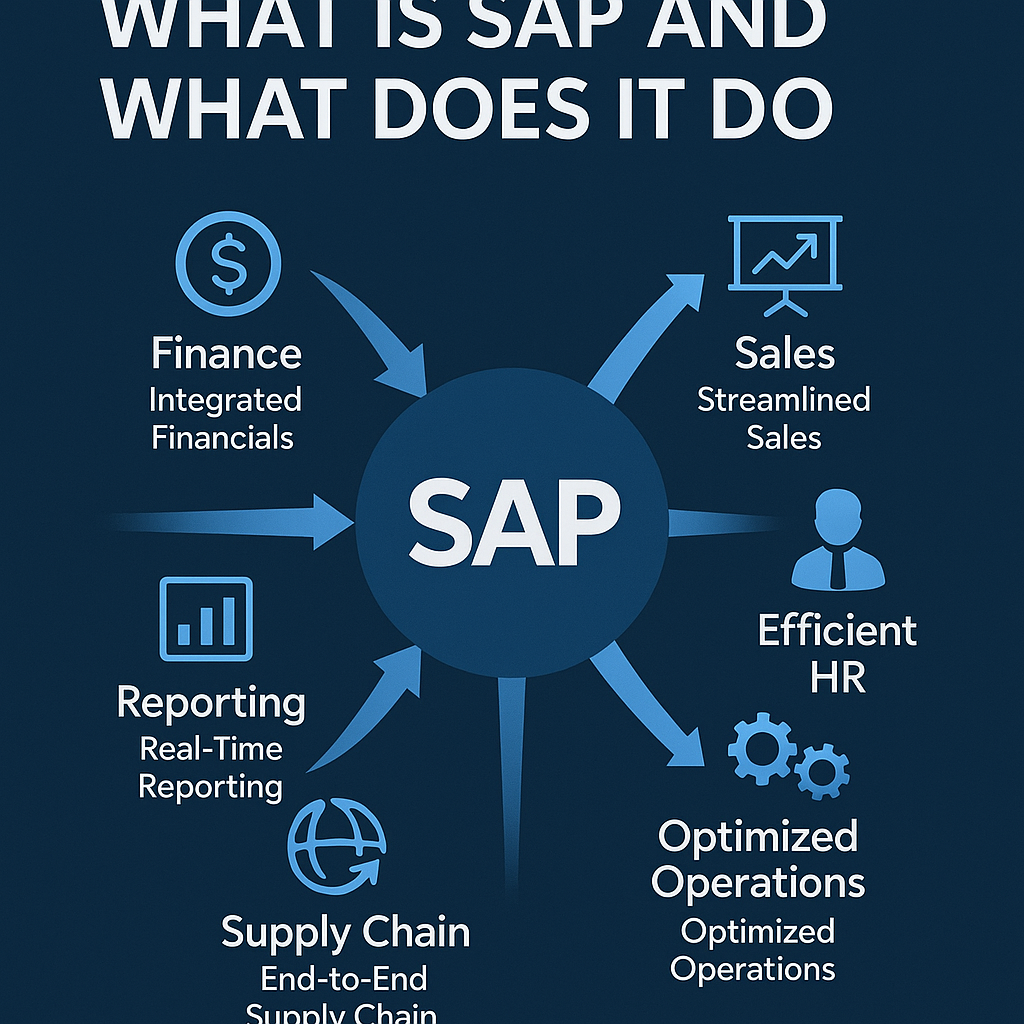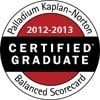When a new commander takes charge of a military unit, their first move is a complete inspection — understanding both people and equipment before deploying any strategy. For CEOs, your SAP system is your most critical asset, and managing it on faith is a risk your business can’t afford.
A SAP System Audit provides that rigorous, top-to-bottom assessment, revealing exactly where your company excels and where potential profit is leaking away. This audit goes beyond compliance; it transforms uncertainty into actionable data, empowering your leadership to unlock hidden value and maximize competitive advantage. With a clear, fact-based roadmap from a thorough SAP System Audit, you gain the insights needed to move ahead with confidence.

Need Strategic Level Advice on getting maximum value from your SAP System. Then get our CEO's Guide to SAP
What a SAP Audit Really Means
Let's be clear. This isn't about your financial auditors stopping by for a visit. We're not talking about a check-the-box compliance exercise that your CFO handles. A SAP performance audit is completely different.
It's a deep look at your system's capabilities and its actual performance. Think of it as a health check for the very heart of your operations, often handled by an organization's internal audit team. This audit examines your core end-to-end sap process flows that really drive the sap business.
This includes processes like Procure-to-Pay (how you buy things) P2P and Order-to-Cash (how you sell things) OTC. According to a report from researchers on business process management, inefficiencies here directly impact cash flow. The entire goal is to pinpoint weak spots, find duplicate efforts, and uncover big opportunities for improvement in your sap environment.
Why CEOs Can't Rely on Faith — Systems Need Facts
Over many years and hundreds of SAP projects, one thing is certain. No company runs on SAP ERP alone. You probably have a mix of different software solutions bolted together over time.
Your business operates on a hybrid landscape. Maybe you have Salesforce for your sales team, another tool (Hubspot) for marketing, and a few custom-built sap applications. This creates islands of information that don't talk to each other very well, leading to challenges in data migration and governance.
A SAP system audit acts as the bridge connecting these islands. It shows you where processes overlap or where sap systems are fighting each other. This is often where the biggest profit leaks are found, hiding in plain sight within your sap enterprise structure.
A SAP System Audit Uncovers Hidden Problems
You might think your system is running smoothly, but small issues can snowball into massive costs. A proper sap audit almost always brings some surprising problems to the surface. It's like turning on the lights in a room you thought was clean.
Underused SAP Functionality
Did you know SAP offers over 2,500 standard business processes? Most companies we see only use about 30 of them. That means you are likely paying for powerful key features that are just sitting there, completely ignored.
This is like buying a Ferrari and only driving it in first gear. A sap systems audit identifies these unused tools and modules within the sap application. Activating them can often solve problems you were considering buying another new piece of sap software to fix.
Outdated MRP Strategies
Your Material Requirements Planning (MRP) strategy dictates your entire inventory management and supply chain management. Many companies set it up once and then forget about it. But business changes, customer demand shifts, and the supply chain evolves.
An outdated MRP configuration is a common cause of stockouts or bloated, expensive inventory. According to IBEF, poor inventory management can severely cripple profitability. Regularly auditing your MRP strategy based on real sales data and usage data makes sure you have what you need, right when you need it.
Disconnected Demand Generation
Your marketing and sales teams live in their CRM. But does that information flow smoothly into your SAP system to inform forecasting and production? For many businesses, the answer is a firm no, impacting everything from Human Capital Management SAP HCM to SAP Finance.
This disconnect means you're missing out on real-time SAP Data about what customers want. Integrating systems like your CRM and marketing automation platforms with SAP lets you create smarter marketing campaigns. A full audit can map out exactly how to build those connections and give you a more accurate view of demand with the help of sap consulting services.
Unit of Measurement Mismatches
This sounds like a tiny detail, but it can have huge financial consequences. Imagine your supplier sells you a raw material by the pound, but your system tracks it in kilograms. Small conversion errors can seem minor at first.
But over thousands of transactions, these little mistakes add up. They can lead to inaccurate inventory counts and financial misstatements that get your auditors very concerned. An audit spots these tiny but costly discrepancies so you can fix them and produce a clean sap audit report.
The Critical Security Dimension of an SAP Audit
Beyond operational efficiency, a comprehensive security audit is a non-negotiable part of any modern SAP system review. Threats to data security are more sophisticated than ever, and a breach can have devastating financial and reputational consequences. A sap security audit focuses on vulnerabilities that could expose sensitive information.
Effective audit management in this area examines user permissions, network configurations, and system logs. It ensures that access control measures are properly implemented, preventing unauthorized users from gaining read access or modification rights to critical data. This includes a review of roles and authorizations managed by your sap basis team.
Tools like the security audit log are invaluable, providing a detailed record of system events. An audit of these audit logs can reveal suspicious activity that might indicate a breach or an internal threat. This is why one of the first documents I, as a Senior SAP Program Manager ask for, is your Segregation of Duties (SOD) document. Integrating your SAP environment with solutions like microsoft sentinel can further improve threat detection capabilities, offering real-time analysis and alerting for potential security incidents.
Here's a breakdown of common security focus areas in a SAP audit:
| Security Area | Key Audit Objective | Associated SAP Keywords |
|---|---|---|
| User Access & Authorization | Verify that users only have the minimum access necessary to perform their jobs (Principle of Least Privilege). | sap access, sap access control |
| System Configuration | Check for secure parameter settings and patch levels to protect against known vulnerabilities. | sap basis, sap environment |
| Log Monitoring | Review the sap audit log and other audit logs for unauthorized changes or suspicious activities. | security audit log, threat detection |
| Data Privacy & Governance | Ensure compliance with regulations like GDPR by reviewing how sensitive sap data is handled and stored. | data privacy, data governance |
| Disaster Recovery Plan | Validate that the disaster recovery plan is robust, tested, and capable of restoring operations quickly. | disaster recovery, sap business |
For businesses running SAP HANA, a HANA audit is especially important. This involves reviewing sap hana audit policies to ensure they are correctly configured for your specific database instances. Properly set up hana audit policies are crucial for protecting the core of your modern sap solution, whether it's on-premise or in a public cloud.
Auditing for Licensing and Compliance
Another area where faith is a poor strategy is software licensing. The sap global license auditing service is a reality for most SAP customers. An unexpected bill for non-compliance can run into millions of dollars, creating a significant sap risk for the organization.
Proactive license auditing should be part of your regular audit planning. This process involves reviewing user types, system usage, and software packages to make sure you are in line with your global license agreement. It is far better to identify and correct issues yourself than to have them discovered during an official audit by the auditing service.
Effective audit procedures here will look at the data collected on system usage against contract entitlements. This prevents costly surprises and ensures you are only paying for the software you actually need. Strong audit policies for licensing can save your company a substantial amount of money over time.
Modern Tools for Your SAP Audit
Gone are the days of manual spreadsheets and guesswork. Today, we use powerful tools to get a crystal-clear picture of your sap cloud and on-premise systems. These tools speed up the auditing sap process and give much more accurate results.
For example, sap solution manager is great for mapping your configurations and integrations, while the sap audit management module helps streamline the entire audit lifecycle. This sap solution aids in process automation for audit tasks. It helps you see exactly how different parts of your system interact, from core application development to human capital processes.
Beyond technical tools, we use approaches like Value Engineering. This helps model the return on investment (ROI) for any proposed changes from the audit report. It answers the critical question: "If we make this improvement, what's the real financial benefit?" You can even start thinking about that by looking at an ROI Calculator yourself.
A modern audit also looks at how you connect to external systems using tools like SAP Integration Suite for secure identity management. Aligning platforms like HubSpot CRM for marketing data improves your overall Profit-Driven Business Strategy. This makes sure your sales and marketing efforts are directly linked to your supply chain management operations.
The CEO's Audit Playbook: 10 Lessons Learned
So, you're ready to move from faith to facts. What are the key takeaways from an audit?
Here are ten common lessons that surface again and again.
- Don't Set and Forget Your MRP Strategy. Your business isn't static, and neither is the market. Your MRP strategy needs to be reviewed and adjusted based on actual sales and supply chain performance at least twice a year.
Pro-Tip: Schedule SAP MRP audits every six months using real-time KPIs from SAP Analytics Cloud to spot inventory trends and respond quickly. - Stay Current. SAP releases updates and new functionality constantly. Falling behind means you're missing out on improvements from the sap global team that can make you more efficient and secure.
Pro-Tip: Establish an SAP Update Review workflow; review release notes and plan quarterly system updates to maximize new features and compliance. - Make Data-Driven Decisions. Your system is full of valuable information. Use real data for everything from capital management to inventory planning instead of relying on gut feelings. Executives need great SAP Reporting Skills to do this well.
Pro-Tip: Equip your team with SAP BW and embedded analytics so that planning and reporting is guided by trusted, real-time business data. - Embrace Mobile Now. Your employees, from the warehouse floor to the sales team, need access to business processes on their mobile devices. Don't make them wait.
Pro-Tip: Leverage SAP Fiori and mobile apps to empower field teams with live transactional access to critical business processes. - Think Like Your Customer. Your customers are already using mobile devices to research, buy, and get service. If your processes are clunky and desktop-only, they will find a competitor who makes it easy for them.
Pro-Tip: Map the customer journey in SAP CRM and monitor key experience metrics with regular feedback loops to identify and fix process friction fast. - Stop Buying Redundant Systems. Before you buy another piece of software to solve a problem, check if SAP can already do it. An audit reveals what you own but aren't using.
Pro-Tip: Do a system overlap analysis with SAP Solution Manager Integration Monitoring before any new software purchase to ensure you leverage what you have. - Simplify Your IT Landscape. Fewer systems mean lower maintenance costs and fewer integration headaches. An audit shows you where you can consolidate and simplify.
Pro-Tip: Use SAP Landscape Management to consolidate redundant systems and automate low-value maintenance tasks for cost efficiency. - Integration is Not Optional. Your systems must talk to each other. A disconnected IT environment with poor data governance creates manual work, encourages errors, and hides valuable business insights.
Pro-Tip: Invest in SAP Integration Suite for seamless connectivity between all your business-critical systems and eliminate data silos. - View IT as a Partner, Not a Cost Center. The technology department can and should be a strategic partner. An audit can align your IT capabilities, including your privacy policy enforcement, with your core business goals for growth.
Pro-Tip: Include IT leaders early in audit projects and link audit outcomes directly to business KPIs to align tech strategy with growth. - Audit for Opportunity. An audit is not about finding fault. It's about finding opportunity through tools like sap process automation. Approach it as a proactive step toward building a stronger, more profitable company.
Pro-Tip: Use SAP Process Automation tools to routinely cycle through underused features, unlocking process improvements and measurable financial gains.

Conclusion
In the end, running a business on faith is no longer a viable strategy. Your competitors are using data to get smarter, faster, and more efficient. A comprehensive SAP system audit is your most direct path to discovering the hidden value locked away inside your company.
From strengthening data security and ensuring license compliance to optimizing your supply chain management, the audit provides actionable facts. It is an investment in clarity, efficiency, and future growth. It is about understanding the key features you own but don't use.
By shifting from faith to facts, you equip your organization with the insights needed to not just compete, but to lead. Your audit gives you a clear roadmap to a more profitable and stable future. It's time to stop guessing and start knowing.
Get a SAP Value Realization Roadmap.
We are a SAP implementation and support partner. We can implement SAP in your business from 'greenfield' all the way to performing global roll-outs. With our deep Industry Expertise, we can help you uncover hidden value within your SAP system and drive your business to levels of profitability. Please our book a meeting service to get started.




